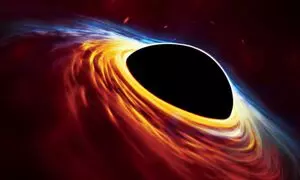
Unexpected! See what researchers found in the heart of a star clustre
text_fieldsRepresentational.
Washington: Researchers found freshly found a black hole among a cluster of stars, which was the core of an earlier galaxy, swallowed by the Milky Way some 8 to 10 billion years ago. On Wednesday, the researchers who were scrutinizing the cluster of seven stars said that they noticed an unusual motion among them, providing evidence of the black hole, Reuters reported.
The black hole is about 17,700 light-years from Earth. A light-year is the distance light travels in a year, 5.9 trillion miles (9.5 trillion km).
Researchers said that the newly found mid-sized black hole is bigger than the class of ordinary black holes, which are formed after the implosion of a single star, but is smaller than those residing in the centre of most of the galaxies.
The cluster of stars scientists were studying is named Omega Centauri, and it contains around 10 million stars. The freshly found black hole is at least 8,200 times as massive as our Sun, they said.
For size comparison, the Sagittarius A* is a supermassive black hole that resides at the centre of the Milky Way and is 4 million times the size of our Sun. It is the only larger-known black hole in the Milky Way and is located 26,700 light years from Earth. Sagittarius is dwarfed by many other black holes present in other galaxies, which are billions of times the mass of the Sun.
The fresh findings were published in the journal Nature.
Black holes are extraordinarily dense objects with gravity so strong not even light can escape, making it difficult to spot them. This one was detected based on how its gravitational pull influences the velocity of seven fast-moving stars in its vicinity, which was documented in two decades of Hubble Space Telescope observations, Reuters writes.






















